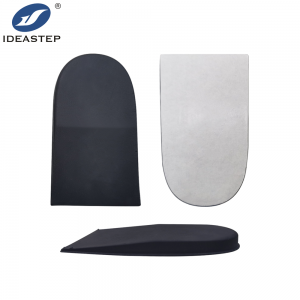
Heel pads are orthotic devices designed to provide cushioning and support to the heel area of the foot. They serve several roles:
- Shock Absorption: Heel pads help absorb the impact forces that occur during walking, running, or jumping. They reduce the stress on the heel bone (calcaneus) and surrounding tissues, such as the plantar fascia and Achilles tendon, by dispersing the forces more evenly.
- Cushioning: Heel pads provide an extra layer of cushioning under the heel, which can be beneficial for individuals who experience heel pain or discomfort. They help to alleviate pressure and provide a more comfortable surface for the foot to rest on.
- Pressure Redistribution: Heel pads can help redistribute pressure away from specific areas of the heel that may be experiencing excessive pressure or pain. This can be particularly useful for conditions such as plantar fasciitis, heel spurs, or heel bursitis.
- Alignment and Support: Some heel pads are designed with additional features to provide alignment and support to the foot. For example, they may have a raised medial (inner) or lateral (outer) edge to help correct foot pronation or supination issues. By promoting proper foot alignment, heel pads can help improve overall foot function and reduce the risk of injuries.
- Heel Lift: In some cases, heel pads may be used to provide a slight lift to one or both heels. This can be beneficial for individuals with leg length discrepancies or certain conditions that require a specific heel height for optimal comfort and function.
Heel pads come in various materials, including gel, foam, or silicone, and can be found in different thicknesses and designs to suit individual needs.
Expand more related content: https://www.aideastep.com/heel-pads/.
